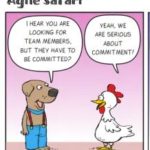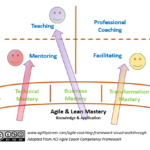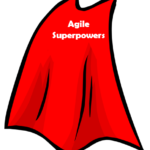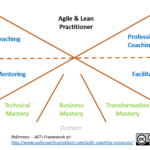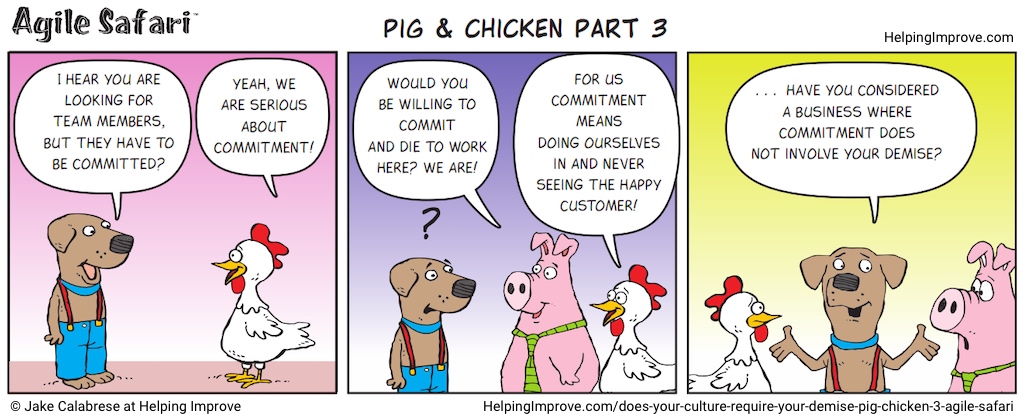
Leadership
Agile Coaching Framework Visual Walk-through (Part 3)
Learning the different approaches an agile coach may take can be challenging without experiencing them. My preference when training people is to run exercises to help them experience the various approaches to agile coaching. Most recently, I had the opportunity to run one with a diverse group of people at a recent conference. We got into some amazing discussions! I also had a chance to riff back and forth with Bob Hartman, who joined me for part of the session, which created a fun dynamic!
Since getting together in-person is not always possible, this article includes visual diagrams of the agile coaching framework, to explain visually, how to walk-through the framework.
Be Better, Don’t Limit Yourself to Best Practices
We hear a lot about best practices. We talk a lot about them. Many organizations are of the opinion that if they can identify the best practice, they are set. Of course, that thinking can be limiting in a number of ways. We need to be better, not best.
Limiting Yourself with Best Practices
Googling “best practice definition” gives you “commercial or professional procedures that are accepted or prescribed as being correct or most effective.”
Wikipedia says : “A best practice is a method or technique that has consistently shown results superior to those achieved with other means, and that is used as a benchmark. In addition, a “best” practice can evolve to become better as improvements are discovered. Best practice is considered by some as a business buzzword, used to describe the process of developing and following a standard way of doing things that multiple organizations can use.”
Notice in the Wikipedia definition they add the idea that they can evolve to become better. This gets to the root of what we need to be doing.
Agile Superpowers – Being Agile
Agile Superpowers are feeling skills or attitudes. How can you up your game and tap into your inner wisdom to help your teams and organization? They can be looked at as a space to ‘come from’ when working with others in a team, as a leader, as a coach, or in any capacity that requires you to engage with others. The idea of Agile Superpowers is based on metskills (more on that later).
The challenge in writing or talking about Agile Superpowers, is how to convey a feeling or attitude in words. There is an essence that we don’t want to lose when talking about Agile Superpowers, but in trying to define them we risk losing that essence. One example of an Agile Superpower is curiosity. Curiosity not about being a “questioner”, but to have curiosity in your bones! I mean REALLY REALLY REALLY curious! The kind of curious where judgement and ego fade away!
Building Antifragile Relationships and Teams @ Santa Barbara Agile
Building antifragile relationships is about finding ways for our relationships to gain from disorder, or be more antifragile. What tools and practices can we use to help us thrive from disorder? What mindset do we need to hold to be present with the teams and organizations we are in?
I’m excited to be presenting a session at Santa Barbara Agile titled: “Building Antifragile Relationships and Teams.” The session will be on November 19th! You can signup and find specific details at the Santa Barbara Agile Meetup.
Resolving Conflict by Working with Team Toxins
We know from Team Toxins and Team Conflict, that toxins are normal. So we can’t just “get rid of them.” In fact, pretending there are never toxins in a team could be viewed as a form of stonewalling. There are a number of ways to resolve conflict by working with team toxins. These not “iron-clad plans” or best practices, they are approaches to resolving conflict that ideally start before major conflict has emerged.
The four team toxins are criticism, contempt, defensiveness, and stonewalling.
Below I list a number of ways to work with team toxins. These are ideas that make or break our teams and relationships. I believe they make the difference between being engaged and checking-out. Many of these ideas are concepts that should be explored
Team Toxins and Team Conflict
Team toxins have the ability to wreak havoc on our teams and organizations if left unchecked.

Team toxins can lead to team conflict if people are not aware of and able to deal with toxins. Understanding team toxins is one preemptive way to deal with team conflict.
The four team toxins are:
- Criticism (or Blaming)
- Defensiveness
- Stonewalling
- Contempt
Learning from ACI’s Agile Coach Competency Framework (Part 2)
There are many ways to look at the Agile Coach Competency Framework and many opportunities to learn. In Understanding ACI’s Agile Coach Competency Framework (Part 1), I outlined my summary of the framework, it’s competencies and the coaching stance. Part 2 looks at what you can learn from the framework and ideas about how to use the ideas to learn and grow as a coach and a leader.
Understanding the Agile Coach Competency Framework (Part 1)
Agile Coaching. A seemingly simple term that causes so much confusion. Much of the confusion seems to stem from the reasonable question of “what does an agile coach do?” ACI (Agile Coaching Institute) defined an Agile Coach Competency Framework. I’ve used the framework over the years both for agile coaching and leadership. I find it valuable to help people to understand the different perspectives they can approach agile coaching from. We use the framework as a one tool in Advanced Scrum Master Training (A-CSM) and as one set of approaches and skills in Leading Amazing Teams Training. We find it offers leaders insights into how they can shift from a leader-follower to a leader-leader approach to leadership. ACI had a whitepaper outlining the framework (created by Lyssa Adkins and Michael Spayd on a website – no longer active). This article includes my summary of it based on multiple sources — as well as my personal experience with it and ways to learn from it.
Thoughts on Agile Coaching
There are many ideas and definitions of agile coaching. I was talking to with some people this week about agile coaching and figured I’d summarize a bit of the discussion here.
Given that each agile coach is helping unique people, who make up unique teams, who make up unique departments, and organizations — we should expect there to be a large degree of variation as to what an agile coach does. People, teams and organizations are at different points in their agile journey. This necessitates that as an agile coach, you meet people where they are. There are so many variations of clients and situations that attempting to propose a prescription is unwise.
Agile coaches work in service to and with clients, helping them achieve the amazing results they are capable of.

